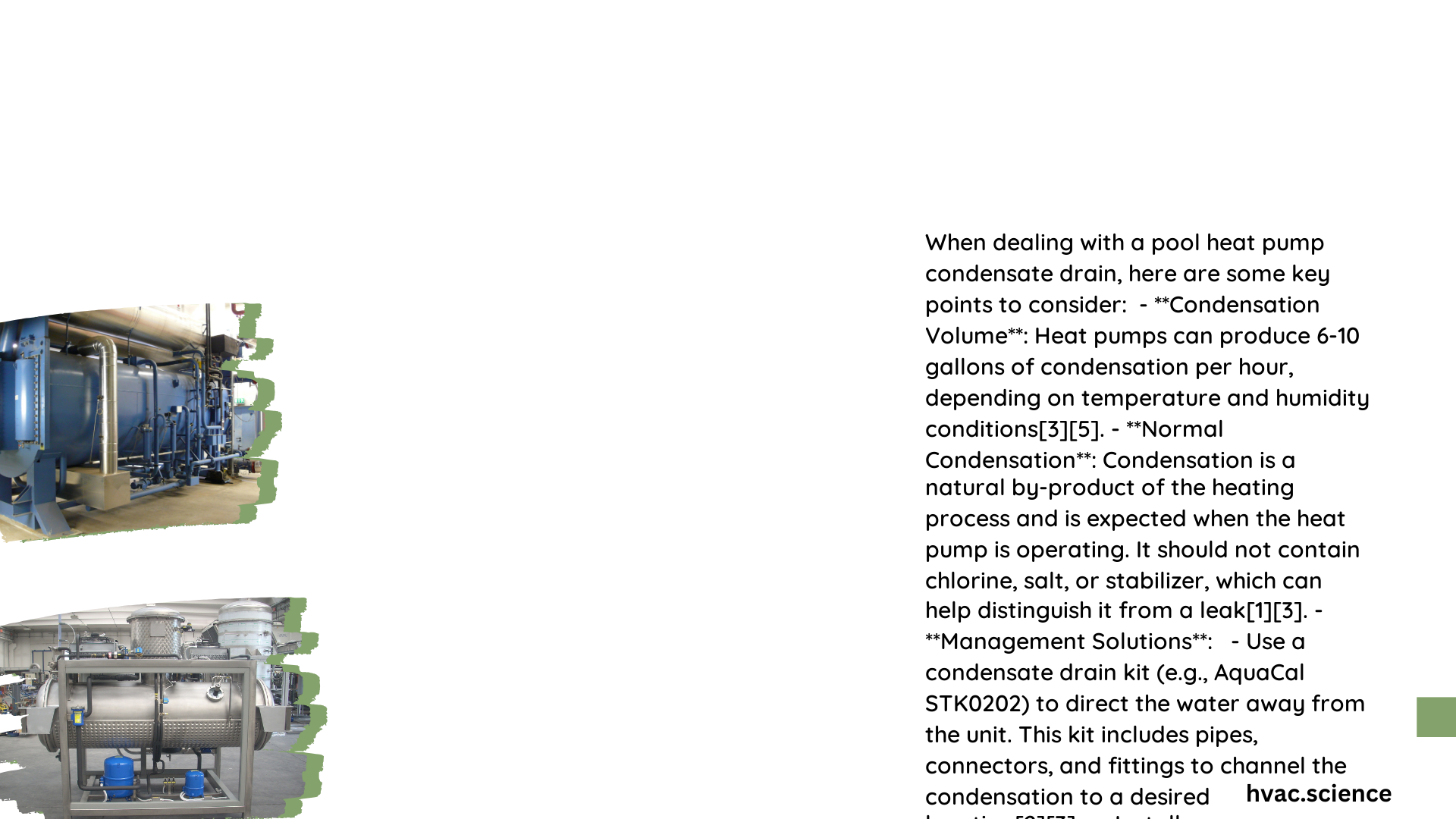Pool heat pump condensate drain is a critical component that manages moisture produced during heat exchange processes. Proper installation and maintenance ensure efficient water removal, prevent system damage, and maintain optimal heat pump performance. Understanding the nuances of condensate drainage can help pool owners protect their investment and maintain consistent heating efficiency.\n\n## What Is a Pool Heat Pump Condensate Drain?\n\nA pool heat pump condensate drain is a specialized drainage system designed to collect and redirect water condensation generated during the heat transfer process. As the heat pump operates, moisture accumulates on the evaporator coil, requiring a systematic approach to water management.\n\n### Why Proper Condensate Drainage Matters\n\n| Consequence | Impact |\n|————|——–|\n| Water Accumulation | System inefficiency |\n| Potential Corrosion | Equipment damage |\n| Blocked Drainage | Performance reduction |\n\n## How to Install Pool Heat Pump Condensate Drain?\n\n### Materials Required\n\n- PVC pipes (minimum 1.5 inches diameter)\n- Drain tray\n- Water outlet tube\n- Slope measurement tool\n- Pipe connectors\n\n### Installation Steps\n\n1. Select Drainage Location\n – Choose a suitable drainage point (floor drain, laundry sink)\n – Ensure proper slope for water flow\n\n2. Prepare Drain Tray\n – Position drip tray underneath heat pump\n – Confirm proper alignment with condensate outlet\n\n3. Connect Drainage Pipes\n – Use water-resistant materials\n – Maintain minimum 1/4 inch per foot slope\n\n## What Are Common Condensate Drain Challenges?\n\n### Potential Issues\n\n- Blockages from debris\n- Inadequate slope\n- Corrosion\n- Insufficient drainage capacity\n\n### Troubleshooting Techniques\n\n- Regular visual inspections\n- Monthly line flushing\n- Use of vinegar for mineral buildup removal\n- Check condensate pump functionality\n\n## How to Maintain Pool Heat Pump Condensate Drain?\n\n### Maintenance Checklist\n\n- ✓ Inspect drain lines quarterly\n- ✓ Clean with vinegar solution\n- ✓ Check slope consistency\n- ✓ Verify pump operation\n- ✓ Look for potential corrosion\n\n## What Are Best Practices?\n\n1. Use corrosion-resistant materials\n2. Implement regular cleaning schedule\n3. Monitor drainage performance\n4. Comply with local plumbing codes\n5. Consider professional annual inspection\n\n## Technical Specifications\n\n| Parameter | Recommended Value |\n|———–|——————-|\n| Pipe Diameter | 1.5 inches minimum |\n| Slope | 1/4 inch per foot |\n| Inspection Frequency | Quarterly |\n| Cleaning Method | Vinegar flush |\n\n## Expert Tips\n\n- Always prioritize proper slope\n- Use p-trap for preventing odors\n- Consider condensate pump for below-grade installations\n- Monitor system during high humidity periods\n\n## Conclusion\n\nEffective pool heat pump condensate drain management requires understanding installation techniques, maintenance protocols, and potential challenges. By following systematic approaches and remaining proactive, pool owners can ensure optimal heat pump performance and longevity.\n\n### Reference:\n- Heat Pump Water Heater Installation Guide\n- Swimming Pool Heat Pump Manual\n- HVAC Condensate Drainage Best Practices

